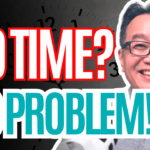
Avoid The Biggest Asset Mistake Like Robert Kiyosaki

Did Robert Kiyosaki say owning your home an asset or liability? Could THAT be the biggest asset mistake? What about investing in asset bubbles?
Well, Robert Kiyosaki tells us that Assets put money in our pocket, and so he’s often quoted as saying that since buying your home takes money out of your pocket, it’s a liability.
That’s just one of the many points that confused me like crazy when I first read it, and even got me worried that I had made a big financial blunder by owning my home. Even finance gurus like Dave Ramsey & Ramit Sethi take completely different views. And judging by the questions I get asked over the years when our students first come to us, it’s something that still gets lots of people thoroughly confused.
But if you want to avoid the biggest asset mistake, then the first thing you need to do is to understand, in wealth creation terms, what an asset actually is. And we’ll be covering that in today’s video.
Only then can you properly start to accumulate good assets. And that’s the key to building wealth, and consistent passive income streams, that will give you the wealth and financial independence that Robert Kiyosaki talks about, and enable you to live the life of your dreams, your purpose, and to retire well, with complete peace of mind.
We’ll also be exploring the dark side of assets – asset bubbles which have single handily destroyed more bank accounts and lives than anything else I know, and I’ll share something from 2008, which made me, to this day, emphatically hate asset bubbles. And no, it’s nothing to do with me losing money. And stick around till the end where I’ll share the investing criteria that has helped our students get financially free through asset ownership and the income it creates; and at the same time, how they used that same methodology to avoid those deadly asset bubbles… and finally, I’ll tell you what the biggest asset mistake is… and hint… it’s not asset bubbles.

Introduction to the Robert Kiyosaki Series
In case we’ve not met, my name’s Tim Low, and I teach people to create multiple income streams with their Purpose instead of Mastery, so that they can live purposeful, meaningful lives.
It was a rainy December back in 1998 when I first read Rich Dad Poor Dad.
I am in my second year as a lawyer then, and I’m doing my annual In Camp Training – if you didn’t know, in Singapore we have military conscription, so I served as a conscripted soldier for 2 and a half years before I went to university.
After that we get a couple of weeks off work every year, until, we get too old to be soldiers, just like I am now, and in those couple of weeks, we get to play soldier.
Being a stressed out lawyer, this is a welcome break. Put on a camo uniform, catch up with old friends, get some exercise, and I always pack a book. But this time, I didn’t get to read the book I brought, because a friend in camp, he comes up to me, and he tells me, “Tim, lawyers exchange time for money right? There’s a better way, and I can’t explain it as well as this book…” Then he passes me a copy of Rich Dad Poor Dad, and he says, ‘this is for you… I know this will help you… read it over the next few days, and we’ll talk again…’. As it turns out, he is recruiting for an MLM, and if memory serves me right, it was Herbalife, but this was 1998 right? So, Andrew if you’re watching this, forgive me if I got the wrong MLM.
Back to the story, he was to try convince me that I shouldn’t stay in a job, and that I should get into MLMs. To cut a long story short, he didn’t succeed, and I went on to be a lawyer for another 18 years.
Be that as it may, I will always be grateful for that introduction to Robert Kiyosaki, because that completely changed the way I look at money.
Over the years, lots of direct sales recruiters for insurance companies, other MLMs, used Robert Kiyosaki’s books, like the Cashflow Quadrant, as recruitment tools. And that has led to the misconception that Robert Kiyosaki said that one should NEVER be in a job. And that’s simply not true, he never said that, and I’ll get into that in another episode.
Now Rich Dad Poor Dad’s a great book, but there’s so much misinterpretation, so many Chinese Whispers from people who haven’t actually read it, and let’s be honest, some of the stuff is great advice – in fact, it’s fantastic advice, but it’s really hard to apply.
Recently, something happened that made me think, “I need to do a video series on Robert Kiyosaki’s teachings, make it publicly and freely available on Youtube, podcasts, or wherever you’re catching this from, so that it can help as many people as possible.” And so, here we are…
I can’t remember how many times I’ve read the book, but I read it a lot, because I remember thinking to myself, great content, but how do I specifically apply this… maybe I should read it again…
All that must have really sunk in, because a student of mine left a review on our course, and this is what he said…
“While Tim Low doesn’t directly draw from Kiyosaki’s teachings, his course brilliantly guides you through the implementation of those very principles. It’s as if he seamlessly continues where Kiyosaki leaves off.”
It was when I read this review that I thought, wow, this book’s really impacted my life in a massive way, and I didn’t even realise it. And that, my friend, was the trigger for this series.
And so, I read Rich Dad Poor Dad again, and pieced what Robert Kiyosaki taught, together with what I’ve been teaching our students.
So, if you find this type of content helpful, then like this video, so Youtube will share this with more people, and so I’ll know I should continue making more of these videos, and consider subscribing so that you don’t miss any of those next lessons when they come up.
What an Asset actually is – the key to avoiding the biggest asset mistake
Now, before we can accumulate assets and build our wealth and income, we need to know – what an Asset actually is?
And for that first step, a great starting point is to look at the accounting definition of an asset.
In accounting an asset is defined as a resource with economic value that’s owned or controlled by a person, a company etc, with the expectation that it will provide a future benefit.
So let’s apply that to the question at the start of this video – is owning your home an asset? Could that be the biggest asset mistake?
Lots of people think owning your home will provide a future benefit, because of things like home prices going up, plus you have the security of living there. So, it does fit into the definition provided by the accountants.

Robert Kiyosaki’s definition is a lot simpler.
If it puts money in your pocket, it’s an asset.
If it takes money out of your pocket, it’s a liability.
Following Robert Kiyosaki’s definition then, owning a home takes money out of your pocket, so it is a liability.
He also says that the Rich buy assets and the poor buy liabilities.
And this has been the basis of a lot of people saying that Robert Kiyosaki says, “don’t own your home”.
As we observed at the beginning, various gurus have differing views on this. From Dave Ramsey on the one hand, to Ramit Sethi on the other end of the spectrum, who doesn’t believe in home ownership. But this video isn’t about home ownership, it’s about assets, and how if you really understand assets, then you’ll never have to rely on a guru, or someone on the internet like me, telling you if buying a home is a good idea or not. Whenever I teach something, I value giving you what I call a Deep Understanding, so you’ll understand for yourself, and you’ll be able to make up your own mind. Okay?
What really helps our students get out of that confusion of “is this an asset or not?” Cos most of them after reading Rich Dad Poor Dad say, “I only want to buy assets, and not ‘accidentally’ buy a liability…” And what I’ve found really helps them is drawing a distinction we draw between 2 types of assets: Income Producing Assets and Speculative Assets.
At Purpostry, we teach that they’re both assets. The difference is that Income Producing Assets or IPAs (not the beer), produce income, but Speculative Assets don’t.
In Robert Kiyosaki’s definition of an asset – something that puts money in your pocket – only Income Producing Assets are considered assets, and this is the source of the confusion. Because he refers to home ownership as a Liability – which is in his definition correct – because he defines a liability as something that takes money out of your pocket.
Let’s look at that Accounting definition again. An asset is a resource with economic value that’s owned with the expectation that it will provide a future benefit.
If your home can be sold in the future for more money than you paid for it, than that falls nicely into the Accounting definition of an Asset, and that’s why most believe that owning a home is – it’s an asset.
I personally believe in home ownership. I own my home. We live in inflationary times, and I believe that one of the best ways we not only hedge against inflation, but BENEFIT from inflation, is by owning assets whether they’re Income Producing or Speculative, assets, as long as they’re good assets. And I’ll get to that in a second. But home ownership isn’t for everyone. And at Purpostry we believe that your choices must reflect your Purpose and lead you to your Purpose.
Especially when it comes to financial and investment decisions. Your financial decisions must lead you to your purpose. Nothing in this video is meant to be financial or investment advice, or advice of any nature. This is just edutainment. I am not a financial or investment adviser. These are my opinions, which of course come with my biases. So, before making any investment decisions, do your own due diligence, and NEVER rely on some guy on the internet, whether it’s me or anyone else.
But back to assets.
What we teach at Purpostry, is that a home, or Real Estate as your Personal Residence, is a Speculative Asset. By contrast, Real Estate for Rental is an Income Producing Asset.
See the difference? They’re both Real Estate, and they’re both assets, because both of them provide you with an expectation of future economic benefit, but one puts money in your pocket now, and one takes money out of your pocket – for now, anyway.
So Robert Kiyosaki calls the one that puts money in your pocket now an asset, but the one that takes money out now, a liability. But in reality, they’re both assets, just different types of assets.
This is often the lightbulb moment for a lot of our students. So, play this back again if you need to.
Which type of Assets to buy – the next key to avoiding the biggest asset mistake
Now, the next question I tend to get is which should you buy? Income Producing Assets or Speculative Assets? Now, between Income Producing Assets and Speculative Assets, I always tell our students that it’s much easier, and safer to purchase Income Producing Assets.
Between Income Producing Assets and Speculative Assets, I always tell our students that it’s so much easier, and safer to purchase Income Producing Assets.
That’s because you can value Income Producing Assets, based on the income it’s putting in your pocket. You can’t value Speculative Assets.
Let’s use that earlier example of real estate. One’s your home, the other’s being rented out. So, what’s your home worth? $50 per square foot? $1000 per square foot? $2000 per square foot? Who’s to say?
But if you rent it out, then the value becomes much easier to determine. It’s a function of how much rent you can get from it.
And how much rent you can get from it is determined by the value your tenant ascribes to it. Or how much value he can get from that land.
This is easier to see with retail premises.
Retail space in an urban shopping mall, right next to a subway station with high foot fall, will always cost more than retail space in the middle of the dessert, which you have to drive miles to get to.
That’s because, the shop next to the subway has lots of people going through it. That translates to more sales. The more sales the retail tenant can make from renting the space, the more value he gets, the more he’s willing to pay, and the more the landlord can charge for rent. The more the landlord can charge for rent, the more he’s willing to pay to purchase that space. Make sense?
Now, even if you don’t rent out your home, it’s CAPABLE of producing income, it’s just that you’re not using it for that purpose. So it’s not a baseless speculative investment, as long as you value it based on the income it could produce.
As I said earlier, I generally tell our students, especially if they’re new to investing, to stay away from owning completely Speculative Assets. Because it’s so much more difficult to value.
These days, Robert Kiyosaki seems to favour Bitcoin and Gold. And to me, these are Speculative Assets because there’s just no way to value them based on the income that it can produce. Sure there are lending schemes etc out there, but there’s no basis for that income, unlike foot fall in a shopping mall, or profits from a business.
For disclosure, I do, from time to time, have some exposure to these speculative assets, but I ensure that they’re a small portion of my portfolio. And if you’re someone who feels the need to have some Bitcoin or Gold in your portfolio, – make sure you’re like Robert Kiyosaki and doing it as part of a larger portfolio, where he’s got lots of other income producing assets like real estate etc…, because remember, his own definition of an asset is something that puts money in your pocket, which is an Income Producing Asset, and not a Speculative Asset.
And I keep saying to stay away from purely Speculative Assets, especially if you’re not a seasoned investor, because as we’ve just seen speculative assets are very difficult to value accurately, and that makes them subject to things like bubbles. Once you leave rational valuation behind, anything can be in a bubble.
Avoid Bubbles if you want to avoid the biggest asset mistake
If, like me, you’re old enough to remember the Dot Com bubble bursting, or the Housing Crisis of 2008, or even the recent COVID market rally and bust. And if you’ve lived through it, then you’ll know, bubbles are scarry things. Lots of people lost lots of money. And lots of people claimed the made lots money, but have you ever wondered where they all are now? See when bubbles are forming, lots of gurus will pop up, telling you to put your money there, that it’s a once in a lifetime chance to make tonnes of money. If you’ve lived through a couple of bubbles, you’ll have seen this yourself. And bubbles are evil – I’ve personally witnessed someone jump to his death during the 2008 housing crisis. I mean, I didn’t see his body falling, but I was buying coffee, and there was a crashing and thud and his body was there. Bubbles are evil, they cause devastation. Think what that poor man must have gone through before he decided that jumping out of a hotel room was the best solution for him…. Think of what his family must still be going through today. And I’m sharing this, and I’m making this video, and reviving this Youtube channel, because I don’t ever want to see that happen to anyone ever again. Imagine the pain.
Have you ever been caught in any of those bubbles? Let me know in the comments below… Also, we’ve found that our most successful students journaled, and writing down what you’ve just learnt amplifies the learning – so if you’ve learnt anything today, hit that like button, so this message can reach a lot more people, and subscribe, and, journal what you’ve learnt in the comments below…
All of these bubbles were caused by the same thing – Speculative Assets where the price departed from the value of the assets.
In the dot com bubble, anything with a dotcom at the end were given valuations that had no basis on the amount of income that the business made. Same with the Housing Crisis, same with the COVID rally, where anything associated with work from home boomed – when gurus said, buy Zoom or worse, buy a call option on Zoom, when it was at nearly $500. That was Oct 2020. Then the market crashed, and lots of people lost money. As this episode is being recorded, the markets have recovered, and gone back to all time highs. Zoom is still trading at around $60. While Zoom might now be profitable now, and arguably income producing… at the time of the bubble, it wasn’t income producing. And as a Speculative Asset it was hyped up and price went way beyond its value because as we said, Speculative Assets are harder to value.
So how do you avoid getting caught in a bubble?
First, you make sure that your assets are able to produce income, and you buy them at a valuation that’s not too far from its ability to produce income.
So if you know an asset can produce $1000 a year, and you invest when its price reflects its ability to earn that much, you’ll not get caught in that bubble.
The bubble happens when companies might not even be profitable, but there’s a growth story around it that completely hypes it up…
…like the work from home stocks, or the dot coms. Or that the financial system’s going to collapse so put everything in bitcoin. Bubbles are based on stories, not value. Stories that are told by an early entrant, to lure others in, so they can make money. In many respects, bubbles are not that different from a Ponzi scheme.
Instead of listening to the stories, and a lot of these stories may be hyped up by media, because these stories get attention, you need to know the value, and then buy below value, and you can still make a lot of money. And you can do that without taking the risk or buying into the bubbles.
In fact, we teach our students that they should only buy assets, and do that only when it’s price is below its value.
I can hear some groaning – how can we ever make money with these ‘safe assets’.
Since we were talking about Zoom, I’ll give you another similar example, Facebook.
It traded up to over $380 during the covid boom. Then it went to below $100. And I give you this example because Facebook’s numbers are not that far off from Zoom’s. The difference is that Facebook’s a profitable company. It’s value was conservatively around $300. I owned Facebook shares anyway because I advertise on Facebook, and one of the things I do, is I buy assets that I personally use. But when Facebook went that far below valuation, below $100, the media were saying that it’s the end of Facebook, cos that’s a good story. It wasn’t. Whatever people say, whatever the story is, Facebook was income producing. And so, we can tell it’s value. Facebook is back to over $380, and if you, like some of those in our community, had bought Facebook at below $100, you would have made as much money from a safe asset that’s Income Producing, as speculating in a business like Zoom, but without much of the risk.
Now, don’t go rushing to buy Facebook shares, now. Analysts that we follow put their value below, or at around its current price. And what did I say earlier?
That we should only buy good assets, and buy them when it’s price is below its value.
So, what is a good assets? Well, we teach our students that they should purchase assets that have a proven increase in value, because as the value goes up, the price will trend up with its value, so you benefit from the asset appreciation as well as having bought below its value.
Now, the biggest asset mistake one can possibly make is… not getting an UNDERSTANDING of assets.
When you don’t understand assets you’ll fear.
You’ll fear not know what a good asset is, and end up NOT buying ANY assets at all, and you’ll fear missing out, and then listen to all the hype around bubble, and buy bad assets.
And bad assets can wipe you out.
Conversely, good assets can make you wealthy. And even turn you from being a victim of inflation to benefiting from inflation.
So buy good assets which generate income, buy good assets when price is below value, buy good assets that have an increasing income and hence increasing value.
And if any one of those criteria aren’t met, we generally tell our students not to invest, cos unless they check all the boxes, it’s likely not a good investment. It’ll likely not give you the returns, or worse, might cause you to lose money. It certainly won’t give you peace of mind, and will even cause you stress.
And beyond not having investments that cause you stress, once you Understand assets, the assets you accumulate can align with your Purpose and further it – giving you ownership that you’re proud of, and income that’s fulfilling, and that’s what Purpostry is all about.
Since this is a Robert Kiyosaki series, and we asked the question earlier about what he might say about investing in your home… Applying what you’ve learnt today, I’d image that he might say, that your home isn’t the first thing that you’ll want to invest in, because, depending on where you live, your home’s value might not go up as quickly as other assets, it certainly won’t put money in your pocket now, as compared to other assets that might put money in your pocket without needing to sell the roof over your head.
And if you’d like to learn how to start putting money in your pocket on autopilot, using another one of Robert Kiyosaki’s often misunderstood lessons, then you need to watch this video, and don’t forget to like and subscribe, and get our Free 4 Day Lifestyle Income Workshop at start.purpostry.com/workshop, link in the description, and watch this playlist to learn how you can create multiple fulfilling income streams using your Purpose instead of mastery, so that you can live, a purposeful, meaningful life…

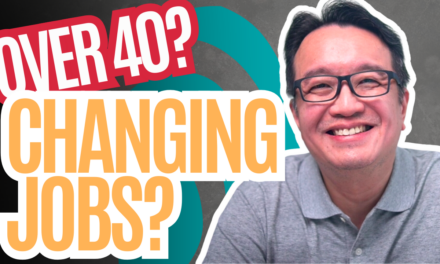
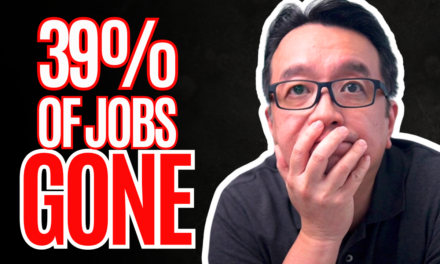
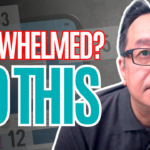

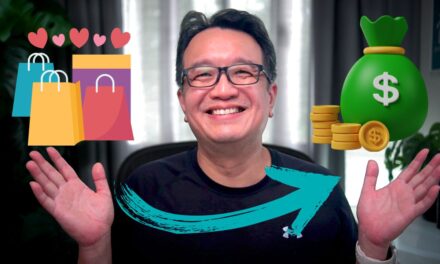



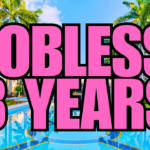
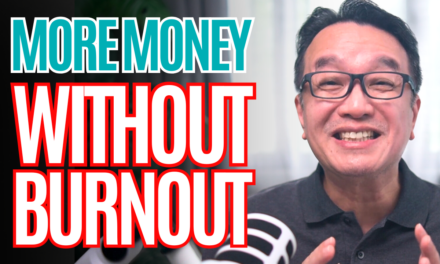
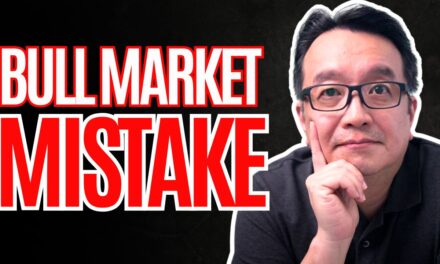





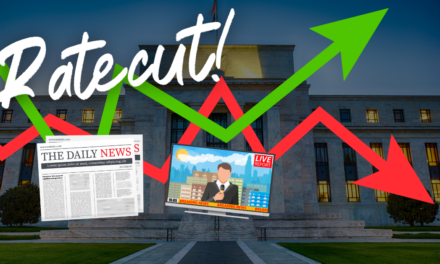


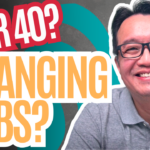
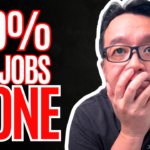
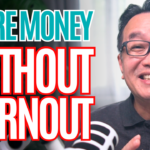

Recent Comments